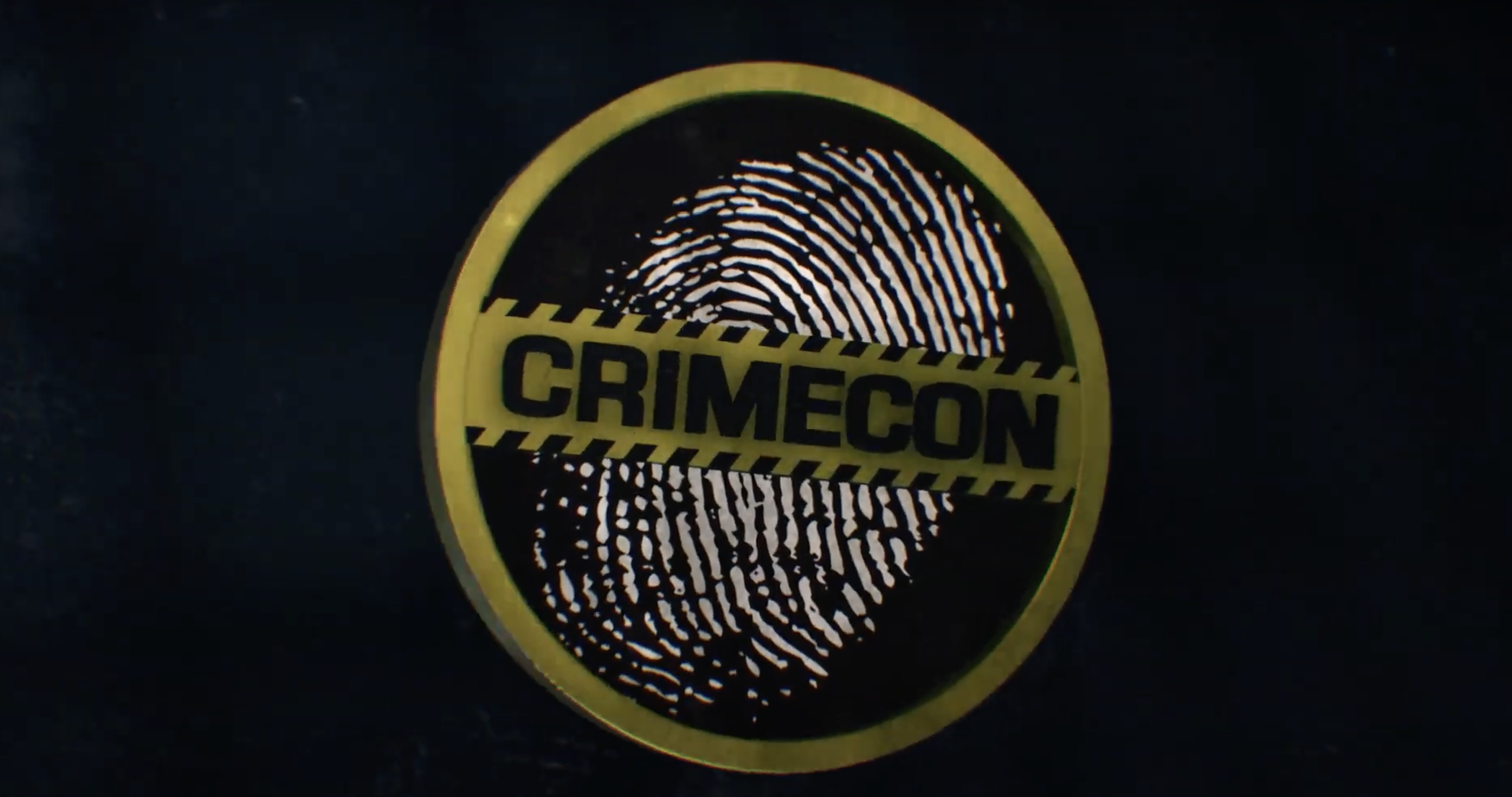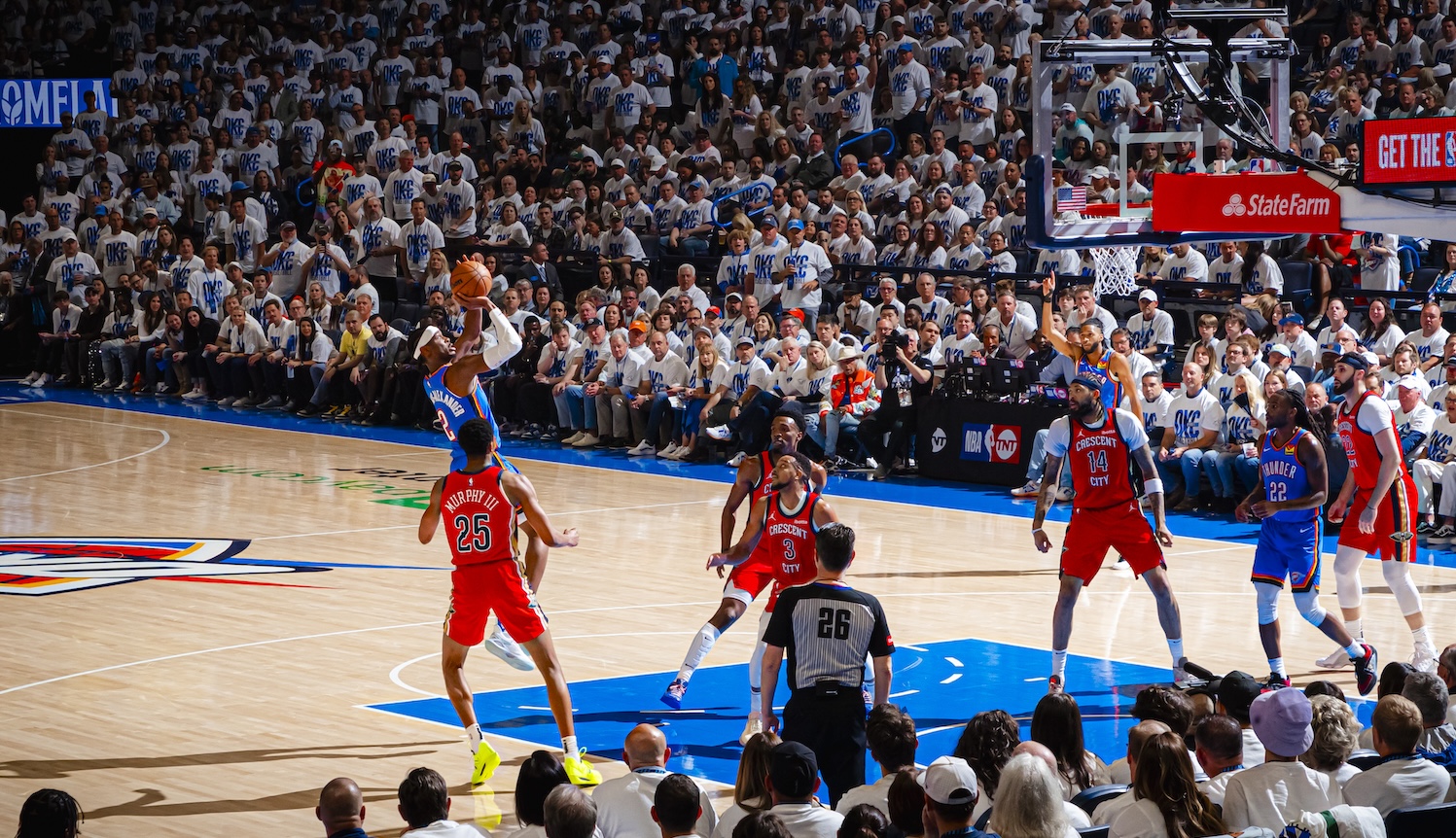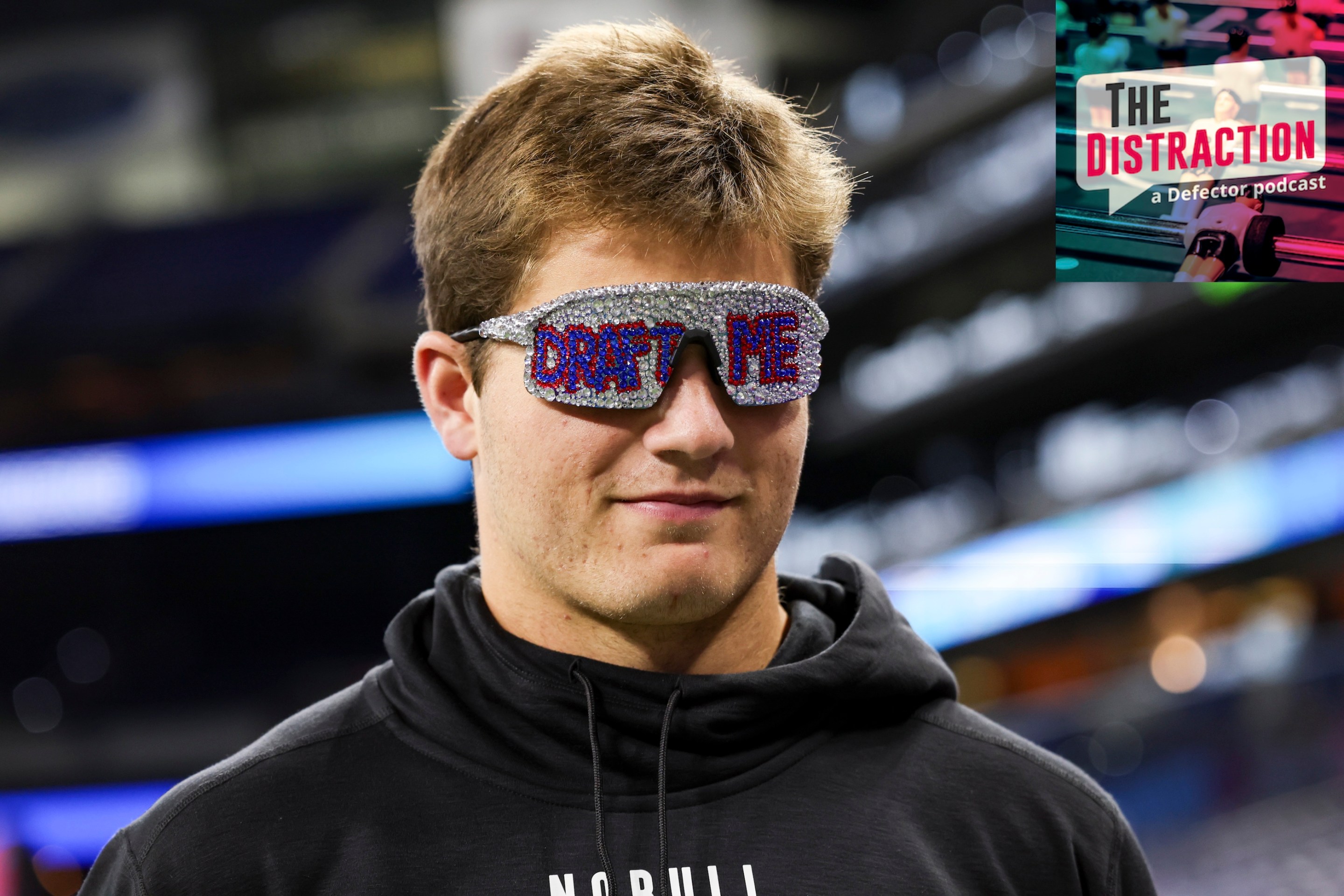The CrimeCon logo is a coin inlaid with a fingerprint and crossed with yellow caution tape. It is surprisingly tasteful given that I arrived at the Paris Hotel, on the Las Vegas Strip, for the sole purpose of witnessing the depths of depravity on display at a gathering of true crime obsessives. Being glib, I expected something blood-splattered, maybe a magnifying glass or a dismembered body part.
CrimeCon is where true crime lovers go to be adored and coddled. The convention is the offspring of Oxygen, the television channel that, in 2017, pivoted its lifestyle content to true crime aimed at women, mostly millennials. People obsessed with true crime tend to be quite outspoken about the genre, a kind of personality statement that actually reflects their avowed interests in, say, feminism or legal reform. “Our events are equal parts education and experience,” reads the official CrimeCon site. “Whether you're interested in wrongful convictions, forensic linguistics, cold cases, or the latest in forensic science, we work hard to curate a wide-ranging program that has something for everyone and combines hands-on learning with plenty of chances to have fun meeting speakers, podcasters, and other fans.” The “fun” aspect is perhaps the most confusing, considering how grave many of the events are. But never underestimate the media industry’s ability to press the salaciousness of real life horrors into one- or two-dimensional schlock.
On Friday, opening day, I came down the escalator from the parking garage into the hotel’s faux Parisian streets. Hordes of people, mostly women, were standing in large groups, sitting on the floor off to the sides, or queuing up for badges. Frankly, I was giddy. The convention hadn’t officially started yet, but the excitement felt palpable, immediate, and it occurred to me that I hadn’t seen this many white women in one place probably ever. Yes, the gaudy shirts are part of the spectacle at play: The Husband Did It, Catch Killers Not Feelings, Basically A Detective. Ring lights, selfies, livestreams, signed books, expensive merch, even more expensive concessions, a room dedicated to podcasters and podcast software companies, retired law enforcement personnel turned media personalities, DNA testing labs, victim advocacy groups, and two long lines to the bathroom.
Journalist Rachel Monroe came to CrimeCon in 2018, its second year, when it was hosted in Nashville. Admittedly, unlike me, she went with an open mind, as someone who held a longstanding fascination with true crime. Describing the Oxygen content portfolio in her book, Savage Appetites: Four True Stories of Women, Crime, and Obsession, she encapsulated a fair baseline of the larger genre and its general atmosphere, an observation I kept comparing my experience to: “A stable of authoritative crime experts, mostly men with handsome-haggard faces and law enforcement experience. They’re real people, but they always seem half in character, as if they were playing a beloved but slightly remote and overprotective father on a network drama.”
I grew up with a cop, my dad, who never brought work home with him, but never tried to hide the seldomly grisly aspects of it, either. Which is to say, I never saw the appeal of true crime, maybe because I viewed it all as glorified PR for law enforcement (I still do). So, my bias was clear enough to me going into CrimeCon; I even hinted to it in the email exchange with the convention’s outreach team when I applied for my media credentials.
This year, the pool of male and female crime experts (the same names tend to appear from year to year) had been diluted by an army of podcasters, internet sleuths, and token members of marginalized groups trying to make lurid stories of violence and tragedy more inclusive; the program listed a podcast recording on the subject of “Serial Killers of Color,” an embarrassment to people of color everywhere. The paternalism inherent in most things related to law enforcement wasn’t as palpable, though. The attendees of this conference were all firm supporters of the police, but their approval manifested through the worship of detectives and cold case investigators rather than the more obvious flying of a Blue Lives Matter flag.
Obviously, I didn’t expect nuance at CrimeCon, but the convention’s opening video, made up of news clips reporting on high-profile murders and disappearances, was almost (almost) as disconcerting as the subsequent segment, also made up of news clips, detailing the supposed triumphs of justice: Ghislaine Maxwell, Robert Durst, Elizabeth Holmes, the three men who killed Ahmaud Arbery. Each of these received rapturous applause from the crowd, an indulgence of righteousness that is perhaps also due to these people’s chosen entertainment seeming to bear consequential, world-altering results.
I kept experiencing a slippery feeling I couldn’t quite put my finger on there, something ambiently vicious, about seeing the digging-in effect of American support for state-sanctioned violence as promoted by trashy, prurient, and, as of late, purportedly altruistic content about serial killers, cult leaders, abusive partners, child rapists, and every other classification of inhumanity imaginable. It’s one thing to see this effect online—thousands of podcasts, YouTube channels, dedicated streaming platforms, cable television channels, Johnny Depp TikTok commentators– and another to be physically present in a high-capacity auditorium full of people who live in that world every day. Everyone’s enthusiasm definitely seemed genuine and joyous, the entire enterprise meticulously staged by the programmers, some of whom included private consulting and technology firms who work closely with police to build genealogical databases, and duly embraced by its audience.
The first major session of the conference took place in a massive ballroom. The first wave of women rushed to seats at the front of the room, which was filled with approximately 10,000 chairs, the space filling up in a matter of minutes. This marquee presentation came from the people behind the podcast The Real Killer, a limited series investigating the 1982 attack on JoAnn Tate and her two daughters, Melissa and Renee. Tate was killed, Melissa and Renee survived, and a man named Rodney Lincoln, whom JoAnn had briefly dated, was wrongly convicted and served over 30 years in prison before being released. Leah Rothman, a journalist who reported on the story before becoming personally involved and starting the podcast, led the discussion, which featured Melissa, Lincoln’s daughter, Kay, and Lincoln himself.
There is trauma-dumping of the type seen on Twitter and in bad memoirs, and then there is whatever happened onstage at that event. Rothman started out by immediately warning the audience that what they would be talking about was still difficult for the speakers to recount, a tease that, in this scenario, didn’t meaningfully signal actual caution because everyone there came for the explicit purpose of hearing gory details. Instead, Rothman’s warning acted as a promise of visible emotion, which Melissa delivered on as she tearfully relived the night she, her sister, and her mother were stabbed and assaulted multiple times. But the real point of interest, at least for me, was Rodney, now 77 years old, who sat patiently, if a little uncomfortably, as the past was rehashed for him. It was a past that, after the point at which he was incarcerated, he never participated in. Rodney’s presence felt like an afterthought, really, as opposed to a living, breathing manifestation of true injustice and legal incompetence. When he had the chance to speak, he did so methodically, a strong lisp impeding some of his words, the relative slowness of his delivery and the sometimes difficult-to-parse nature of his pronunciation seemed to cause frustration in the room rather than interest or sympathy.
After a few more minutes, I dipped and went to an event in the adjacent room called “Bringing Them Home: Behind the Scenes with DNA Doe Project.” The DNA Doe Project is exactly what it sounds like: an organization dedicated to identifying deceased Jane and John Does, except that it was started by a nuclear physicist and a linguist-turned-forensic-genealogist with no formal background in forensics. Qualifications both do and don’t apply at CrimeCon. Year after year, Oxygen and its partners bank on the avowed helpfulness of its audience, armchair detectives and hobbyists who not only want to participate in solving a crime or identifying a Doe, but desire to be encouraged, deputized. So the people behind DNA Doe, which is now a nationally recognized organization that works closely with agencies across the country, were the perfect fit for this year’s convention, a mixture of professional and non-professional science people who actively asked the attendees to help them identify murder victimes by donating their DNA profiles to federal databases so they could be cross-referenced with other cold cases. “We need your help” was a refrain I heard at multiple sessions.
Monroe wrote, “The detective inside each of us may wish for the world to be transparent, like a dollhouse cut open for our viewing pleasure—but if we’re genuinely seeking truth, we must account for everything we can’t see, our blind spots and biases, how much we willfully misunderstand, all the things we don’t yet—and may never—comprehend.” Blind spots are not openly acknowledged at CrimeCon, except as stepping stones to success, and the detective within is a designation made valid by countless speakers who want the public to be more involved in helping cops solve crimes. The major relevant undercurrent of the past several years, both at CrimeCon and in the true crime genre in general, positions genealogy as a pathway to solving cold cases, which is itself a pathway towards legitimizing the necessity of the police.
It’s why Paul Holes, whose claim to fame is helping solve the Golden State Killer case, was present in two separate events, besides the launch party for his own book. The first was a glorified DNA-harvesting sales pitch made alongside David Mittelman, the CEO of Othram, a private forensic lab also started by nerds who just wanted to help cops catch bad guys; the second featured the daughter of a woman who was murdered by a man they only found because of DNA matching technology. The daughter, after being fawned over by the audience and lauded for recounting her victim impact statement at the killer’s trial, demanded more resources for police departments, which received a huge cheer. It’s why Captain Brandon Ratcliffe, who contributed to an independent investigation into the Gabby Petito case, extolled the existence of CrimeCon and the people, the ones who “see something and say something” who attend.
It’s hard to overstate how self-reinforcing the myth of the nobility of police work and "catching bad guys" is in this country. Which is another reason why it’s also so difficult to separate the exploitative nature of true crime from its entertainment factor. The ambient threat of danger, sharpened into a blunt tool of its own for opportunistic amateurs and professionals alike, provides a thrill unmatched by most other experiences in life. Writer Charlotte Shane, expounding on the media aftermath of Sarah Everard’s murder by a police officer, squares it best:
Analogizing these scenarios is so misguided that it physically pains me. And this ostentatious display of women’s fear, the fetishization of it, frightens me so much more than walking by myself. I’m freaked out by women who hype each other up about how easily they could be killed and leave it at that. (With feminists like this, who needs misogynists?) Men can be, and are, killed by strangers quite easily, too, including strangers in uniform, yet their fear and pain doesn’t garner corporate media’s international attention, not without millions of people flooding the streets to protest it.
Looked at from a different angle, this entire convention could be a monument to the near total uselessness of police departments—all those cold cases, wrongful convictions, and blown investigations—and yet somehow all that failure is digested and metabolized into something that only further elevates the entire field of police work and our punitive justice system. One of the biggest cheers of the weekend came in response to John Ramsey, father to murdered child pageant star JonBenét Ramsey, fantasizing about the types of punishment his daughter’s killer would endure in prison.
I’d say the overall effect of these panels (body language expert Susan Constantine’s “How To Spot A Liar in Seven Seconds or Less” was by far the most ludicrous, fearmongering, and, admittedly, fun), meet-and-greets and afterparties, this accretion of parallel, paranoid narratives and DIY sleuthing, is to make the questioning of the importance of law enforcement itself questionable. You can see the potential for restorative good for yourself, all these reunited families or avenged unknowns, each case given graphic detail to further underscore its tragedy, and, with everyone’s cooperation, ultimate due process. The only difference now is that there is a conspicuous degree of ass-covering, acknowledgements about the scarcity of research or attention given to indigenous, black, trans, and otherwise non-white, non-cis people, which come off as worthwhile addendums to presentations devoted to (still, after all these years) pretty dead white women.
Of course, the real cherry on top was the Dateline panel on Saturday, featuring none other than Keith Morrison, Josh Mankiewicz, Dennis Murphy, and Andrea Canning. For all the internet may have done for podcasts and streaming, it’s hard to deny, amidst an auditorium of rapt thousands, that few artifacts have the sheer reach, legacy, and branding power that Dateline does. There is before Dateline and after, and the crowd’s most frenzied passion suggested that there is no sign of the program becoming irrelevant any time soon. The stars came on, Mankiewicz pandered to the crowd, Murphy rarely followed the softball conversation, Canning kept it simple but direct, and Morrison basked in the glory of his much-memed reputation.
This panel was called “Dateline 24/7: What’s Next for the True Crime Original.” I initially took this to mean, “what’s next for the future of true crime as a whole," but maybe there’s actually no way of determining that. For all the newsteam’s talk of streaming innovation, format freedom, and sincere reporting, the trailers shown for new Dateline products looked as sensational and mawkish as ever. Still, I think it’s fair to say that I was the only person there who was looking for something different, who was too far outside the bounds of interest to enjoy what clearly brought everyone else so much diversion and purpose. There is a machinery at work at CrimeCon, visible and not-so-visible, that blends the serious with the infantile, the intellectual with the primal.
Michelle Orange, reviewing Rachel Monroe’s book Savage Appetites for Bookforum, writes, “The consumption of true crime is tinged with decadence: Who but the untouched, untouchable, or otherwise benumbed could get even cautionary thrills from real-life tales of trauma and slaughter? For years, the genre traded in a fairly limited aesthetic: crime-scene photos, reenactments, lecherous voice-over, talking-head witnesses and detectives.” All of these elements are still in play, but heightened and, depending on your susceptibility to the packaging of information on the internet, made even more real. It makes sense that a production like CrimeCon is able to position itself as both fun and vital, an amazing deal that changes lives for the better. Few places are able to successfully weaponize the parallax of distanced online life and in-person reality, the voices and faces you’re used to engaging with everyday suddenly before you, their process towards uncovering hidden truths readily available. And there’s an unnerving truth beneath these interactions, this gathering of people fascinated by and, however erroneously or genuinely, connected to such morbid material. The covetous proximity of government authority and ordinary curiosity combine to send one clear message: Finding justice requires nothing more than time and effort, and anyone can eventually end up on that stage, a true crusader for the cause, with the right branding and shrewdness of vision.
If you liked this blog, please share it! Your referrals help Defector reach new readers, and those new readers always get a few free blogs before encountering our paywall.
Read More:
Stay in touch
Sign up for our free newsletter





